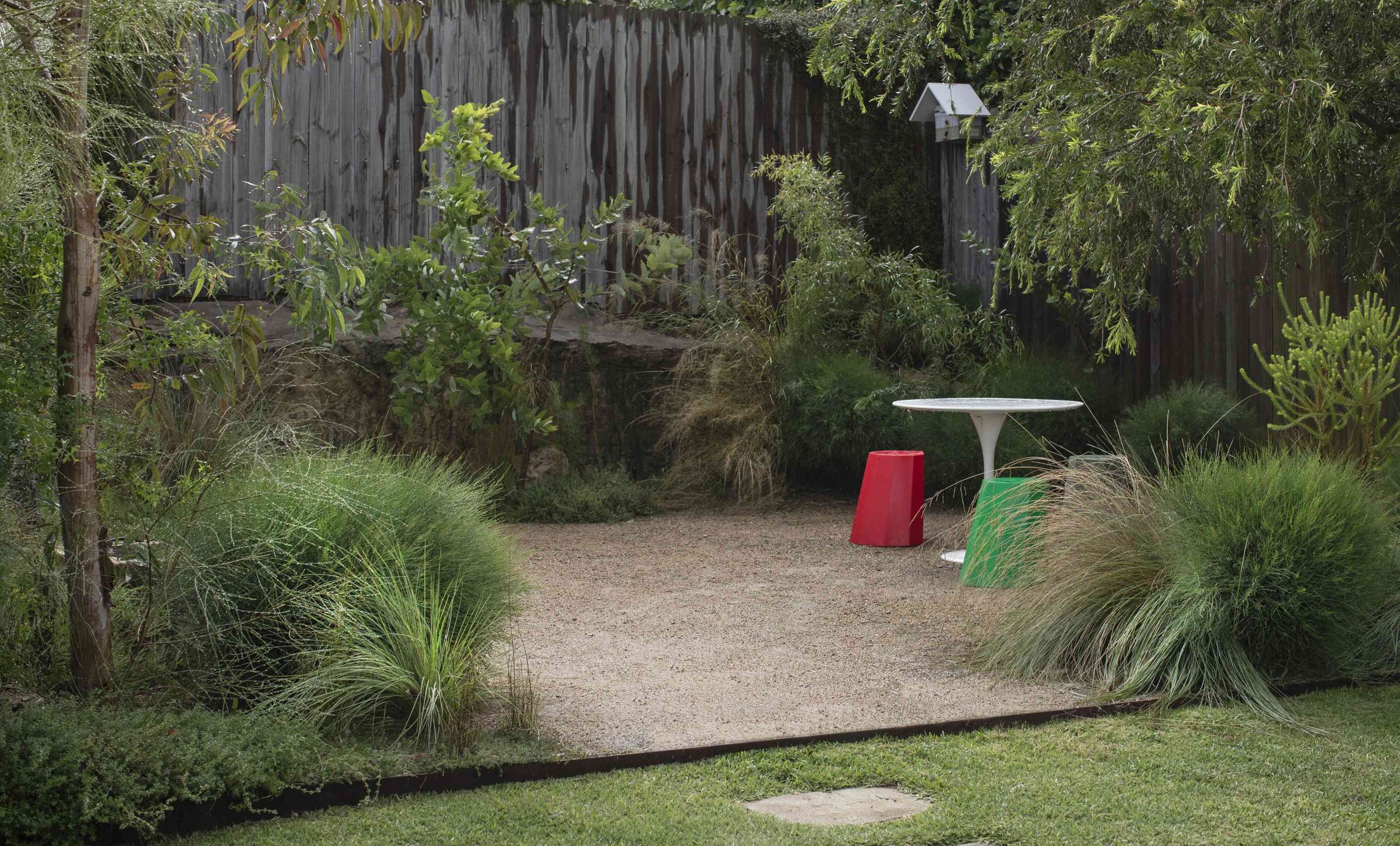Location: Curl Curl, NSW
Photographs: Robert Champion and Justin Aaron Photography
Landscape Installation: Pacific Outdoors
Gardening: TARN + Clients
A large existing bedrock outcrop presents itself as a nucleus, from which a garden can radiate outwards. The site’s sandstone substrate and sandy soil drove the design, which was further exacerbated by the clients appreciation of the wild, bustling cliffline heathland communities of Sydney. A garden that is unrestrained by a clients desires for order and legibility.
This project saw us trial several native species that, while relatively common in the wild areas around Sydney, are tragically underused in landscapes and gardens. They have showed great promise if provided with the appropriate soil and microclimatic conditions. These include Pellaea falcata, Persoonia pinifolia, Acacia longissima, Davallia solida, Angophora bakeri, Allocasuarina distyla, Viminaria juncea, Cissus hypoglauca, Eucalyptus leuhmaniana, and others. These are all species that naturally inhabit Sydney’s Hawkesbury Sandstone vegetation types.
Of interest to us is the clear dichotomy within Sydney’s sandstone flora between fine-leaved, dull-toned ‘sclerophyll’ vegetation and the bolder ‘mesic’ plants. The former tend to occupy fire-prone dry or shallow sandy soils above Hawkesbury sandstone bedrock. The latter tend to occupy shadier, wetter sites sometimes directly on the bedrock itself, or areas that are otherwise protected from fire. A reduction in fire frequency since european occupation has resulted in some sclerophyll flora being squeezed out by mesic species (especially shrubs and trees). Australia generally need more fire not less to maintain floristic diversity and to prevent high-intensity wildfires. It just needs to be the right kind (i.e. cool burning methods such as aboriginal cultural burning or ecologically-based ‘eco burns’, as opposed to enormous ‘Hazard Reduction’ methods that are currently the norm).
Other species of note are Melaleuca irbyana (an endangered paperbark whose range spans the New South Wales – Queensland border) and Notelea microcarpa, a subtle but elegant member of the olive family that naturally grows on skeletal rocky soils from the Hunter Valley northwards.















